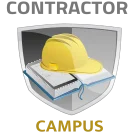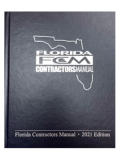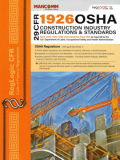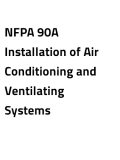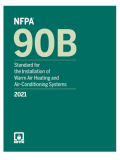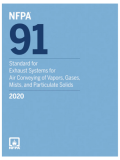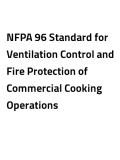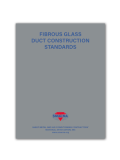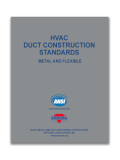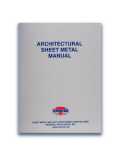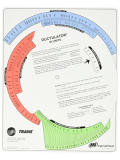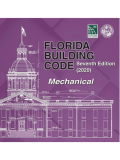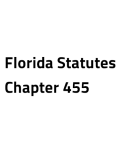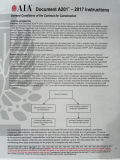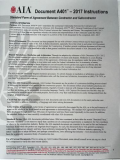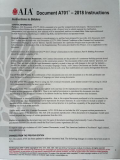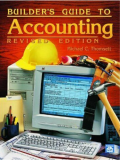Florida Sheet Metal Contractor License
Florida Sheet metal contractors can legally manufacture, fabricate, assemble, adjust, service, or design in contracting involving the following materials:
- Ferrous metal
- Non ferrous metal work of U.S. No. 10 gauge
- Lighter gauge
- Other materials included, but not limited to:
- Fiberglass
- Settings of Air-handling systems
- Air-handling equipment
- Duct cleaning
- Equipment sanitizing
How to Get a Sheet Metal Contractor's License in Florida
- Be 18 years of age.
- Pass all parts of the exam(s) (within four years of the first attempt).
If an applicant has a Bachelor's degree in building construction or a related field, as well as a 3.0 GPA or higher, the applicant is only required to take the business exam. - Pay the fee for the Application.
- Complete the application form using the Online Services, or the Printable Application.
- Be of good moral character.
- Obtain worker's compensation and general liability coverage.
- Demonstrate financial responsibility by submitting a Credit Report:
- 660 FICO credit score or higher (applicant must submit a bond or irrevocable letter of credit if below 660 - FICO derived).
- If FICO score is less than 660, the applicant must take a 14-hour financial responsibility course.
- If applicable, provide proof of satisfaction of liens, judgments, and bankruptcy discharge.
- Background check with Electronic Fingerprints.
- Obtain public liability and property damage insurance.
- Obtain workers' compensation or exemption from workers compensation insurance within 30 days of issuance of their license.
- Satisfy one of the experience requirements set forth by the CILB:
- A combination of Experience and Education
- One year proved experience that applies to the category for which you are applying and a four-year construction-related degree from an accredited college (equivalent to 3 yrs. experience), or
- No less than three years of credits from accredited college-level courses, and One year of experience as a foreman, or
- Two years of credits from accredited college-level courses, one year experience as a foreman, and One year experience as a worker, or
- One year of experience as a foreman, one year of credits from accredited college-level courses, and two years of experience as a worker, or
- Four years of experience as a foreman or worker of which at least one year must have been as a foreman.
- The board expects the applicant to have experience in the following areas of the Sheet Metal trade:
- FAbrication & design, installation and/or air balancing
- Duct systems
- Air-handling/Ventilation systems
- Repair and servicing
- Duct systems
- Air-handling/Ventilation systems
- Additional experience
- Gravel stops
- Coping
- Fascia systems
- Gutters & downspouts
- Flashing systems
- FAbrication & design, installation and/or air balancing
- Military Service
Note: As part of the application applicant must submit the Fee Waiver and Military Service Verification for licensure- One year of experience as a foreman applicable to the category for which you are applying, and three years of military service.
- One year of experience as a worker or foreman applicable to the category for which you are applying, one year of experience as a foreman, and two years of military service.
- Two years of experience as a worker or foreman applicable to the category for which you are applying, and one year of military service.
- A combination of Experience and Education
- Pass the Sheet Metal and Business & Finance exams.(sign up for the exams)
- Submit the complete Sheet Metal application form to:
Department of Business and Professional Regulation
2601 Blair Stone Road
Tallahassee, FL 32399-0783
Florida Sheet Metal Contractor Exams
Florida Sheet Metal Contractors must pass two exams prior to obtaining their license. Do not sign up to take your exams until you obtain your books and begin studying for them!
Florida Sheet Metal Contractor License Exam
- Testing Method: Computer-based testing
- Testing Company: Pearson Vue©
- Number of Questions: 80
- Types of Questions: Multiple Choice
- Time Allowed: 300 Minutes
- Minimum Passing Score: 70%
- Subjects Involved:
Pre-Installation and Site Work (15%)
- Recommending changes to plans and specifications
- Symbols
- Abbreviations
- Terminology
- Dimensioning
- Material costing
- Equipment costing
- Labor costing
- Designing duct systems
- Design requirements
- Symbols
- Abbreviations
- Air velocity’s static pressures
- Final test and balance of completed air distribution system
- Drafting
- Local, state, and national codes
- SMACNA requirements
- Sealants and mastics
- Designing roof drainage systems (sheet metal)
- Flashing requirements
- Roofing materials
- Gutter installation requirements
- Downspout installation requirements
- Designing sheet metal specialties
- Louver requirements
- Screen requirements
- Gravity ventilator requirements
- Power roof exhauster requirements
- Smoke hatch requirements
- Linen and trash shoot requirements
- Stack requirements
- Types of locks and seams
- Design requirements
- Designing grease handling duct systems
- Design requirements
- Fire codes
- Determining proper gauge of metals used
- Gauge tables
- Reinforcement requirements
- Proper gauges
- Types of metal and bracing
- Local, state, and national codes
- SMACNA requirements
- Transporting equipment and materials
- Safety requirements
- Unloading, lifting and lowering materials
- Live loads
- Safety requirements
- Recommending changes to plans and specifications
Industrial Duct Fabrication (25%)
- Fabricating rectangular ducts under 2 ft
- Sheet metal duct requirements
- Fiberglass duct requirements
- Flex duct requirements
- Duct fitting requirements
- Duct outlets and grilles
- Joining requirements
- Double seam corner
- Elbow longitudinal seams
- Butt welding techniques and requirements
- Using a pattern
- Double angles
- Mitering
- Plug weld or spot weld techniques and requirements
- Irregular angles
- How to operate light gauge welding units
- Safety requirements
- Fabricating rectangular ducts over 2 ft
- Sheet metal duct requirements
- Fiberglass duct requirements
- Flex duct requirements
- Duct fitting requirements
- Duct outlets and grilles
- Joining requirements
- Double seam corner
- Elbow longitudinal seams
- Butt welding techniques and requirements
- Using a pattern
- Double angles
- Mitering
- Plug weld or spot weld techniques and requirements
- Irregular angles
- How to operate light gauge welding units
- Safety requirements
- Fabricating round sheet metal ducts
- Sheet metal duct requirements
- Fiberglass duct requirements
- Flex duct requirements
- Duct fitting requirements
- Duct outlets and grilles
- Joining requirements
- Double seam corner
- Elbow longitudinal seams
- Butt welding techniques and requirements
- Using a pattern
- Mitering
- Plug weld or spot weld techniques and requirements
- How to operate light gauge welding units
- Safety requirements
- Fabricating oval sheet metal ducts
- Triangulation
- Measuring lines
- Mitering
- How to operate light gauge welding units
- Safety requirements
- Fabricating fittings for rectangular ducts
- Layout requirements and techniques
- Mitering
- How to operate light gauge welding units
- Safety requirements
- Fabricating fittings for round ducts
- Layout requirements and techniques
- Radial line layout
- Mitering
- How to operate light gauge welding units
- Safety requirements
- Fabricating fittings for oval ducts
- Layout requirements and techniques
- Mitering
- How to operate light gauge welding units
- Safety requirements
- Fabricating snaplock seams
- Allowances
- Fabricating standing seams
- Layout requirements and techniques
- Fabricating other types of locks and seams
- Other types of seam techniques and requirements
- Welding requirements and techniques
- Mechanical seam requirements
- Fabricating interior lined sheet metal ducts
- Layout and design techniques and requirements
- Seam requirements and techniques
- Pin spacing (well pins, etc.)
- Adhesives and coverage
- Fabricating kitchen hoods
- Exhaust out vs. fresh air intake requirements
- Design requirements and materials
- State and national codes
- Layout and design
- Welding requirements
- Fire codes
- SMACNA requirements
- Fabricating kitchen hood exhaust systems
- Exhaust out vs. fresh air intake requirements
- Design requirements and materials
- State and national codes
- Layout and design
- Welding requirements
- Fire codes
- SMACNA requirements
- How to operate light gauge welding units
- Safety requirements
- Fabricating drain pans
- Layout and design requirements and techniques
- Seam requirements and techniques
- Soldering
- Fabricating air handling systems (ducts and fans)
- Seam requirements and techniques
- Fittings
- Fabricating turning vanes
- Different types (single blade, air foil)
- Spacing requirements
- Required numbers of elbows
- Fabricating rectangular ducts under 2 ft
Architectural Sheet Metal (10%)
- Fabricating formed gravel stop fascia systems
- Pitch drippage
- Lips
- Soffits
- Drip edge
- Gauge requirements
- Flange
- Crimped metal requirements and techniques
- Longitudinal break
- Fabricating through-wall flashings
- Materials requirements
- Dowels
- Extension length
- Wall cavity protection
- Fabricating gravel stops
- Minimum gauge requirements
- Cleat requirements
- Edge strips
- Types of gravel stops
- Fascia
- Mastic
- Back-up plate
- Top cover plate
- Fastener requirements
- Watertight washers
- Soffits
- Joint requirements
- Corner requirements
- Fabricating base and counter flashing systems
- Receivers
- Masonry walls
- Effects of drippage
- Notching and lapping
- Drip edge requirements
- Raggle
- Wedges
- Gauge requirements
- Fabricating valley flashings
- Gauge requirements
- Hook edges
- Cleat requirements
- Properties of zinc alloy and painted terne metal
- Crimping techniques and requirements
- Fabricating hip and ridge flashings
- Length requirements
- Shingle roof requirements
- Fabricating flashing around roof penetrations
- Bonnet flashing requirements
- Collar requirements
- Fastener requirements
- Flanges
- Sealing requirements
- Cap flashing requirements
- Fabricating flashing for equipment supports
- Counter flashing requirements
- Insulation requirements
- Cants
- Seaming techniques and requirements
- Inverted V and hemming
- Fabricating formed metal coping
- Gauge requirements
- Types of materials
- Fastener requirements and techniques
- Sealing requirements
- Mitering
- Fabricating extruded coping
- Mitering
- Gauge requirements
- Fabricating expansion joint intersections
- Expansion and contraction sizing requirements
- Curb requirements
- Fabricating roof and separation joint intersections
- Minimum wood curb requirements
- Maximum allowance for expansion
- Continuous flange
- Expansion cap
- Counter flashing requirements
- Standing seam requirements
- Cleat requirements
- Fabricating expansion joints designed to allow independent roof movement
- Face plate requirements
- Hook seam requirements
- Curbs
- Neoprene and weather resistant materials requirements
- Receiver requirements
- Links
- Adhesives
- Minimum gauge requirements
- Length requirements
- Horizontal working width
- Mitering
- Sealing
- Fabricating water stops
- Mitering
- Fabricating expansion joints for floor slabs
- Minimum gauge requirements
- Fabricating seams for flat metal roofs
- Types of seams
- Sealing
- Fastening requirements
- Joint requirements
- Determining gauge and pan width for standing seam roofs
- Materials
- Gauge requirements
- Pan width requirements
- Fabricating batten seams for metal roofs
- Types of seams
- Sealing
- Fastening requirements
- Joint requirements
- Fabricating chevron batten seams for metal roofs
- Gauge requirements
- Lock and seam requirements
- Fabricating mansard roofs and screens
- Cap flashing requirements
- Sill flashing requirements
- Batten requirements
- Standing seam requirements and techniques
- Snaplock seam requirements and techniques
- Double S seam requirements and techniques
- Fabricating parts of an ornamental roof
- Standing seam requirements and techniques
- Batten requirements
- Canopy requirements
- Fabricating parts of a bermuda type roof
- Wood framing requirements and techniques
- Pans
- Continuous cleat requirements
- Minimum gauge requirements
- Pan widths
- Manufacturing parts of a skylight
- Single and double pitch requirements
- Condensate gutters
- Skylight bars
- Weep holes
- Bar joints
- Mitering
- Soldering requirements and techniques
- Material requirements
- Gauge requirements
- Fabricating roof scuttles
- Forming a curb
- Scuttle requirements
- Metal skirt requirements
- Manufacturing formed louvers
- Stiffener bars
- Mullion connected sections
- Sealing requirements
- Metal sill flashing
- Screening
- Fabricating louvered enclosures
- Gauge requirements
- Material requirements
- Fabricating louvered sunshades
- Gauge requirements
- Material requirements
- Fabricating sunshade canopies
- Support requirements
- Sunshade frame requirements
- Fabricating rectangular gutters
- Sizing gutters
- Design requirements
- Fabricating half round gutters
- Sizing
- Design requirements
- Fabricating built-in gutters
- Corrosion resistant materials
- Soldering techniques and requirements
- Riveting techniques and requirements
- Seaming techniques and requirements
- Wood box frame requirements
- Expansion joints
- Continuous cleat techniques and requirements
- Outlet requirements
- Fabricating water diverters
- Sizing
- Pitch requirements
- Gauge requirements
- Cleat requirements
- Bracing requirements
- Allowances for expansion
- Flanges and effects of temperature
- Placing expansion joints in gutters
- Materials
- Width of joints
- Expansion rates
- Fabricating lap type gutter expansion joints
- Riveting techniques and requirements
- Sizing
- Fabricating butt type gutter expansion joints
- Materials
- Width of joints
- Expansion rates
- Fabricating built-in gutter expansion joints
- Materials
- Width of joints
- Expansion rates
- Fabricating expansion joints in welded gutters
- Riveting techniques and requirements
- Sizing
- Fabricating combination scuppers and gutters
- Soldering techniques and requirements
- Intervals
- Rims
- Fabricating hanging gutters
- Sizing
- Gutter brackets and straps
- Material requirements
- Spaces
- Spike and ferrule
- Fabricating gutter accessories (e.g., baffle, screen, strainers)
- Sizing
- Material compatibility
- Fabricating conductor heads
- Sizing
- Minimum length for outlet tube
- Gauges
- Fabricating formed roof sumps
- Flanges
- Gravel stop requirements
- Welding requirements and techniques
- Gauges
- Sizing
- Fabricating scuppers
- Material compatibility
- Gauges
- Welding requirements and techniques
- Fabricating overflow scuppers
- Material compatibility
- Gauges
- Welding requirements and techniques
- Fabricating downspouts
- Dimensioning
- Minimum gauges for standard downspouts
- Material compatibility
- Elbow requirements
- Hanger requirements
- Determining types of downspout hangers
- Types of hangers
- Material compatibility
- Fabricating downspout hangers
- Material compatibility
- Support requirements
- Constructing and installing splash pans
- Placement requirements
- Dimensioning
- Fabricating formed gravel stop fascia systems
Fabricating Other Sheet Metal Structures (10%)
- Fabricating gravity ventilators
- Seaming techniques and requirements
- Material requirements
- Curbs
- Weep hole requirements
- Cants
- Flashing requirements
- Riveting techniques and requirements
- Dampers
- Screening techniques and requirements
- Fabricating power roof ventilators (exhauster)
- Sizing
- Material requirements
- Fabricating smoke hatches
- Spring requirements
- Material requirements
- Riveting techniques and requirements
- Sizing
- Fabricating draft and fire curtains
- Seaming techniques and requirements
- Gauge requirements
- Bracing requirements
- Fabricating cornices
- Sheathing techniques and requirements
- Blocking techniques and requirements
- Fastening techniques and requirements
- Soldering and welding techniques and requirements
- Mitering
- Fabricating spires
- Material requirements
- Welding techniques and requirements
- Fastening techniques and requirements
- Fabricating cornerstone boxes
- Soldering techniques and requirements
- Insulation requirements
- Riveting
- Fabricating column covers
- Gauge requirements
- Material compatibility
- Soldering and welding techniques and requirements
- Fabricating corner guards
- Fastening techniques and requirement
- Fabricating wall panels
- Fastening techniques and requirements
- Fabricating metal siding and roofing
- Welding and soldering techniques and requirements
- Fastening techniques and requirements
- Fabricating exhausts
- Welding and soldering techniques and requirements
- Riveting techniques and requirements
- Fabricating partition and column closures
- Sizing
- Fabricating ornamental hoods
- Welding and soldering techniques and requirements
- Fabricating linen and trash chutes
- Welding and soldering techniques and requirements
- Fabricating stacks}
- Welding and soldering techniques and requirements
- Fabricating gravity ventilators
Installation of Sheet Metal Systems (25%)
- Installing rectangular sheet metal ducts and fittings
- Hanger types
- Hanging techniques and requirements
- Fittings
- Sealants and mastics
- Installing round sheet metal ducts and fittings
- Hanger types
- Hanging techniques and requirements
- Fittings
- Sealants and mastics
- Installing oval sheet metal ducts
- Hanger types
- Hanging techniques and requirements
- Fittings
- Sealants and mastics
- Installing spiral sheet metal ducts and fittings
- Hanger types
- Hanging techniques and requirements
- Fittings
- Sealants and mastics
- Installing coping
- Sealing techniques and requirements
- Blocking techniques and requirements
- Anchoring techniques and requirements
- Cleat requirements
- Installing gravel stops
- Stop fascia
- Cleat requirements
- Fastening techniques and requirements
- Soffit requirements
- Installing fascia
- Fastening techniques and requirements
- Nailing techniques and requirements
- Joints
- Overlapping and corrosion protection
- Installing flashing
- Underlayment requirements
- Fastening techniques and requirements
- Nailing techniques and requirements
- Joints
- Overlapping and corrosion protection
- Installing metal roofs
- Dead loads
- Joining requirements
- Riveting techniques and requirements
- Sealing techniques and requirements
- Seam requirements
- Installing metal roof components
- Joining requirements
- Sealing techniques and requirements
- Seam requirements
- Installing gutters and downspouts
- Sizing
- Hanger techniques and requirements
- Seam requirements
- Water diverter requirements
- Allowance for gutter expansion and joints
- Installing other sheet metal structures
- Joining requirements
- Fastening techniques and requirements
- Performing fire department required smoke tests
- Requirements
- Installing air handling systems
- Fastening techniques and requirements
- Installation techniques and requirements
- Balancing air handling systems
- Balancing to CFM required in different areas
- Air balance meter operation
- Installing kitchen exhaust systems
- Fastening techniques and requirements
- Installation techniques and requirements
- Design and codes
- Installing fiberglass duct systems
- Hanging techniques and requirements
- Joining techniques and requirements
- Installing fire dampers, smoke dampers and fire and smoke combination dampers
- Break-away techniques
- Local and national codes
- NFPA requirements
- SMACNA requirements
- Installing rectangular sheet metal ducts and fittings
Safety and Equipment (15%)
- Wearing hearing protection
- Safety requirements
- Wearing head protection
- Safety requirements
- Types given job conditions
- Wearing eye and face protection
- Safety requirements
- Types given job conditions
- Using respiratory protection
- Material safety data sheets (M.S.D.S.)
- Types given job conditions
- Using ventilation devices
- Material safety data sheets (M.S.D.S.)
- Types given job conditions
- Using overhead hoists or cranes
- Proper rigging techniques
- Using mobile equipment (e.g., forklifts, hi-lifts, cranes)
- Weight capacities of equipment
- Outriggers
- Using ladders, scaffolds, and rolling platforms
- How to assemble
- Safety requirements
- Using brakes
- How to operate
- Safety requirements
- Using shears
- Safety requirements
- Using drill presses
- Safety requirements
- Using cutting equipment
- Safety requirements
- Using various hand and power tools (e.g., power shears, wrenches, and snips)
- Safety requirements
- Using air compressors and air tools
- Safety requirements
- Safe operating pressures
- Wearing hearing protection
- Official list of subjects for the Sheet Metal contractor exam
Florida Sheet Metal Business and Finance Exam
- Testing Method: Computer-based testing
- Testing Company: Pearson Vue©
- Number of Questions: 120
- Types of Questions: Multiple Choice
- Time Allowed: 390 Minutes
- Minimum Passing Score: 70%
- Subjects Involved:
Establishing the Contracting Business (11%)
- Determining the Business Organizational Structure
- Business structure laws and regulations
- Fiduciary responsibilities of officers and directors
- Open vs. closed corporations
- Organizational charts and chain of responsibilities
- State and local licensure requirements
- Tax advantages and/or liabilities for various business structures
- Develop the Business Plan
- Accounting practices
- Local marketplace
- Scope of contractor license
- Establish Relationships with Other Professionals
- Accountant specialization
- Attorney specialization
- Insurance types and limitations
- Underwriting requirements for bonding
- Acquire Fixed Assets
- Advantages/disadvantages of business location
- Advantages/disadvantages of lease vs. purchase
- Obtain Insurance
- knowledge of accounting practices
- Advantages/disadvantages of various types of insurance
- Coverages and limitations of insurance
- Determining the Business Organizational Structure
Managing Administrative Duties (26%)
- Develop the Business
- Availability of staffing for business operation
- Income sources
- Markets and market share.
- Determine Outsourced Services
- Determine Business Overhead
- FICA
- Advertising costs (business cards, dues, printing, etc.)
- Communication costs (cell phones, land lines, etc.)
- Cost of sales (travel expenses)
- Federal unemployment (FUTA)
- General liability rates
- Lease expenses
- Loan financing expenses (interest, etc.)
- Medicare rates
- Rent costs
- State unemployment (SUTA)
- Utility costs
- Worker’s compensation
- Preparing Bids/Proposals
- Accounting principles
- AIA documents
- Business projections/goals current status
- Company overhead
- Contract documents
- Contract law
- Cost of financing projects
- Costs associated with growth
- General conditions costs of projects
- How to review contracts
- How to write offer
- Insurances associated with labor rates
- Labor productivity
- Statute of frauds
- Taxes associated with labor rates
- Components of valid contract
- Purchase Materials/Supplies
- Depreciative costs
- Fundamentals of Uniform Commercial Code
- Inventory system operation (FIFO, etc.)
- Invoice approval systems
- Negotiating skills
- Purchasing systems
- Receiving systems
- State sales tax laws
- Statute of frauds
- Vendors in area
- Prepare Invoices/Draw Requests
- Basic math skills
- Calculation of percentage of work completed
- Contract/subcontract documents
- How to prepare invoices/draw requests
- Lien laws
- Develop a Safety Program
- Drug testing regulations
- MSDS sheets
- OSHA regulations
- Maintain Insurance
- General terms and definitions used in policies
- Insurance policies
- Limits of insurance
- Various types of insurance
- Various types of risk
- Managing Contracts
- Contract law
- Contract scope
- Job completion schedules
- Lien laws
- Mediation and arbitration processes
- Local building code requirements
- Tort law
- Risk management
- Develop the Business
Managing Trade Operations (10%)
- Schedule Trade Operations
- Critical path method (CPM)
- Delivery times
- Manufacturing times
- Requests for information (RFI)
- Sequencing trades
- Submittals/approval/fabrication process
- Maintain OSHA/Safety Records
- Document/record retainage requirements
- Penalties for non-compliance with OSHA
- Purchase/Order Materials & Supplies
- Accounting skills
- Basic math skills
- Job schedules
- Negotiation skills
- Organizational skills
- Plan reading skills
- Quality control
- Quantity take-offs
- Terms and abbreviations on invoices
- Types of building materials
- Leasing/Purchasing Equipment
- Cost of operation of equipment
- Depreciation
- Equipment operation
- Forecasted use of purchased equipment
- Interest costs for financing
- Maintenance
- Salvage resale values
- Support equipment required for equipment
- Tax credits associated with purchases
- Training needs for equipment
- Transportation costs for equipment
- Manage Material/Tool/Equipment Inventory
- Equipment maintenance procedures
- Inventory methods
- Schedule Trade Operations
Conducting Accounting Functions (32%)
- Manage Accounts Receivable
- Accounting principles
- Basic math skills
- Computer skills
- Lien laws
- Manage Accounts Payable
- Accounting principles
- Basic math skills
- Computer skills
- How to calculate discounts
- Lien laws
- Manage Cash Flow
- Accounting
- Banking
- Basic math skills
- Financial ratios
- File Tax Forms & Returns
- Accounting principles
- Basic math
- Federal tax laws
- Property tax laws
- Record keeping requirements
- Sales tax laws
- State tax laws
- Track Job Costs
- Accounting principles
- Basic math
- Calculate Employee Payroll
- Accounting
- State & federal tax laws
- Basic math
- Employment laws
- Employment/labor laws
- Hierarchy of garnishments
- Manage Accounts Receivable
Managing Human Resources (6%)
- Hire New Employees
- Employment laws
- Discrimination laws
- Interviewing skills
- Required forms for new hires
- Background checks
- Develop Human Resource Policies & Procedures
- Employment/labor laws
- OSHA
- Chain of custody (drug tests)
- Insurance regulations
- Evaluate Employees
- Employment/labor laws
- Hire New Employees
Complying with Government Regulation (15%)
- Comply with Federal Laws & Regulations
- FEMA (immigration components)
- OSHA
- Tax laws
- National Pollution Discharge
- Elimination System (NPDES)
- Environmental laws
- Comply with State Laws& Regulations
- Chapter 455 F.S.(Business & Professional Regulation)
- Chapter 713 F.S. (Liens)
- 61G4 F.A.C.
- Worker’s Compensation
- Laws/DOR Sales/Use Tax
- Chapter 489, Part 1 F.S (Construction Contracting)
- Required continuing education
- CEU credit records
- License holder responsibilities
- Comply with Federal Laws & Regulations
- Official list of subjects for the Business and Finance exam
Florida Sheet Metal Contractor Classes
You can sign up for your classes at any time and receive access to lecture videos, practice questions, tabbing and highlighting instructions, as well as to step-by-step explanations on how to solve typical Sheet Metal Contractor Exam Problems. The Sheet Metal Contractor Classes prepare you for the trade and business exams. You can also attend live online classes as needed. All live refresher online classes are on Saturdays from 8:30 AM - 4:30 PM (ET). Florida Sheet Metal Contractor Testing Schedule. You must pass all exams before applying for the Sheet Metal Contractor’s License in Florida. To sign up for the Florida Sheet Metal Contractor Classes, simply click on the "enroll" button below and checkout; this will allow you to receive immediate access to the online Florida Sheet Metal Contractor Classes. All students have access for an unlimited amount of time (until passing all the Florida Sheet Metal Contractor exams needed to get the Sheet Metal License!). For a list of upcoming classes for the Florida Sheet Metal Contractor Exams click on the link within the course description below.
-
s_construction17 1
Credenciales enviadas por correo electronico
Acceso ilimitado (no hay limite de tiempo)
Videos educativos
Preguntas de practica para los libros
Conceptos claves
Soluciones de ejercicios de matematica paso a paso
Clases de repaso en vivo (incluido)
Tutorías 1-a-1 (cargo extra)
$699.00$699.00 -
s_construction_business 1
Credenciales enviadas por correo electronico
Acceso ilimitado (no hay limite de tiempo)
Videos educativos
Preguntas de practica para los libros
Conceptos claves
Soluciones de ejercicios de matematica paso a paso
Clases de repaso en vivo (incluido)
Tutorías 1-a-1 (cargo extra)
$399.00$399.00
Florida Sheet Metal Contractor Books
The set of books includes all required references for both the Sheet Metal and Business and Finance exams. Orders placed before 2 PM are shipped the same day via UPS and a tracking number is emailed before 3 PM.
FLORIDA SHEET METAL - SET DE LIBROS SIN TABS INCLUYE TODOS LOS LIBROS PARA EXAMEN TECNICO Y ADMINISTRATIVO
FLORIDA SHEET METAL - SET DE LIBROS CON TABS INCLUYE TODOS LOS LIBROS PARA EXAMEN TECNICO Y ADMINISTRATIVO
List of Books for the Sheet Metal Contractor Trade Exams
-
The Florida Contractor's Manual is used as on...Florida Contractors Manual
r138 1$181.23$181.23 -
OSHA (CFR 29 Part 1926) is the leading safety...CFR (OSHA) Title 29 Part 1926 (1903, 1904, 19
r84 1$30.00$30.00 -
NFPA 90A is the standard for the installation...NFPA 90A Installation of Air Conditioning and
r228 1$173.88$173.88 -
The Standard for the Installation of Warm Air...NFPA 90B Installation of Warm Air Heating and
r229 1$176.68$176.68 -
r1833 1$216.05$216.05
-
NFPA 96 is the standard for controlling the v...NFPA 96 Standard for Ventilation Control and
r231 1$173.82$173.82 -
The Fibrous Glass Duct Construction Standards...Fibrous Glass Duct Construction Standards
r124 1$154.31$154.31 -
The HVAC Duct Construction Standards is a SMA...HVAC Duct Construction Standards - Metal and
r163 1$241.38$241.38 -
Architectural Sheet Metal Manual is the go-to...Architectural Sheet Metal Manual
r34 1$306.43$306.43 -
The Trane Ductulator is a tool used for duct ...Trane Ductulator
r299 1$30.00$30.00 -
The Florida Mechanical Code is currently on i...Florida Building Code - Mechanical
r130 1$120.37$120.37
List of Books for the Business and Finance Exam
-
The Florida Contractor's Manual is used as on...Florida Contractors Manual
r138 1$181.23$181.23 -
Chapter 455 of the Florida Statutes (Business...Florida Statutes Chapter 455
r462 1$33.61$33.61 -
The A201 is published by the AIA and establis...A201 General Conditions of the Contract for C
r5 1$83.78$83.78 -
Please beware of companies selling photocopie...A401 Standard Form of Agreement between Contr
r6 1$83.78$83.78 -
Please beware of companies selling photocopie...A701 Instructions for Bidders
r7 1$58.41$58.41 -
Builder's Guide to Accounting, is used for th...Builders Guide to Accounting
r67 1$46.28$46.28
